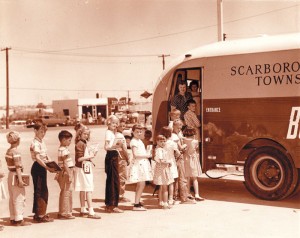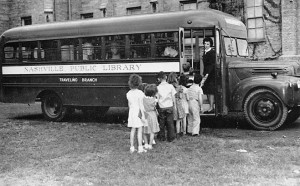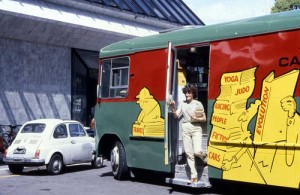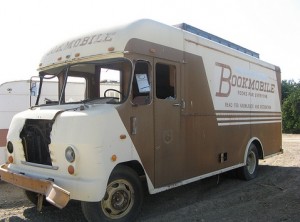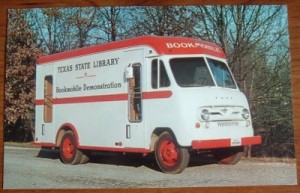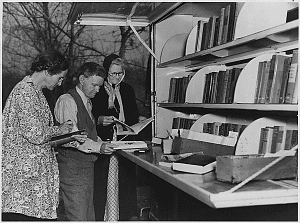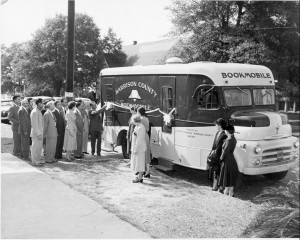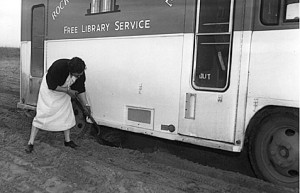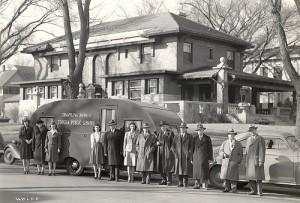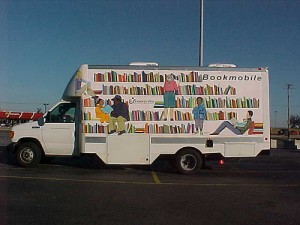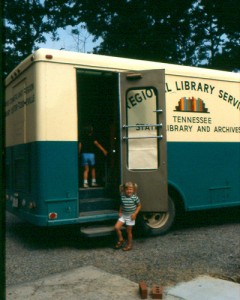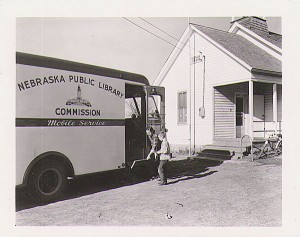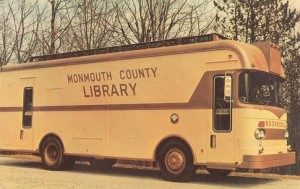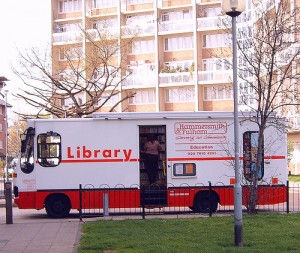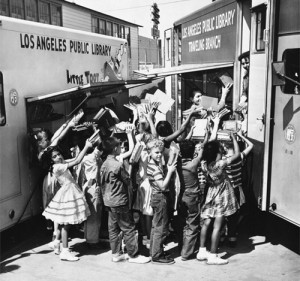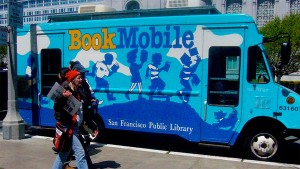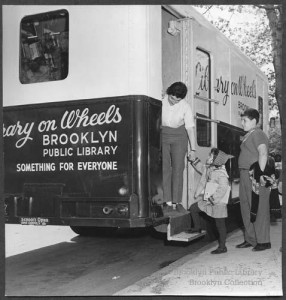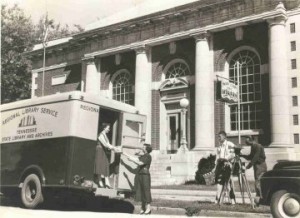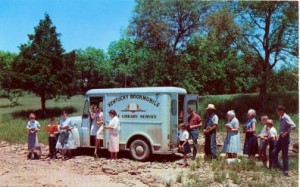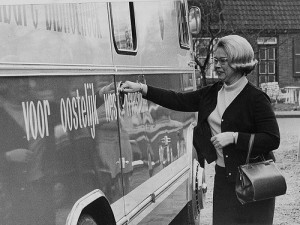Finally.
As a fan of libraries and their advocates, I recently wrote about pioneering Maryland Librarian Mary Titcomb – who developed the idea for the first mobile libraries back in 1905 – and provided a brief history of the bookmobile and it’s early years. Take a minute to follow the link and read the story of Mary Titcomb’s efforts to offer communities access to books, it is really awe-inspiring. Ms. Titcomb would be happy, or at least smugly self-satisfied, to know that her ingenuity and efforts are being honored today – as April 15th, 2010 has been designated National Bookmobile Day by the National Library Association. “An annual celebration of the contributions of our nation’s bookmobiles and the dedicated professionals who make quality bookmobile outreach possible in their communities.†In honor of this historic, somber and important event, I have put together an album of some of the more majestic and beauteous bookmobiles throughout the ages. Hop on board!
In 1956, an amendment to the Library Services Act provided $40,000 to every state that complied with it’s provisions – most notably the extension of library services to rural areas. Thus the infamous bookmobile boom that lasted until the end of the 1960’s. In 1964, the Library Services and Construction Act removed the population limits of the previous Library Services Act, meaning that urban areas would be also eligible for funding. The federal funding along with the do-goodery of the 1960s, provided the backdrop for the gilded and golden age of the bookmobile.
The 1970s, of course, began a steady decline in bookmobile services, as idealism and anything aesthetically pleasing gave way to hideousness, financial woes, rising fuel prices and disco. This trend continued into the 21st century as erratic fuel prices, horrible administrations and advances in digital technology have expedited the bookmobile’s demise. According to the ALA, between 1990 and 2003 the number of bookmobiles in the United States has continued to decrease from 1,102 to 864. Surprisingly, Bookmobiles keep on rollin’ in many communities around the country. And while most libraries have had to discontinue their mobile services, others are actually staging comebacks in some American cities. San Francisco’s public library system for instance, has a fleet of five bookmobiles – one serving children, one seniors and three others that stop in neighborhoods whose regular branches are closed. More than 135,000 books were checked out from the libraries-on-wheels last year. Or Albany’s “Big Purple Bus” which services senior communities, schools, after-school programs, neighborhoods and community events. Then there is the digital bookmobile, a community outreach vehicle for public libraries developed inside a 74-foot, 18-wheel tractor-trailer behemoth. The nationally touring mammoth car of bookmobiles is supplied with digital equipment to download e-books, audiobooks and video to home computers.
There are communities throughout the world that need help in creating or sustaining access to reading materials.
New Orleans Public Library Bookmobile

from audrey niffenegger’s the night bookmobile, guardian.co.uk


